What Event Encouraged Skepticism of the Nuclear Power Industry?
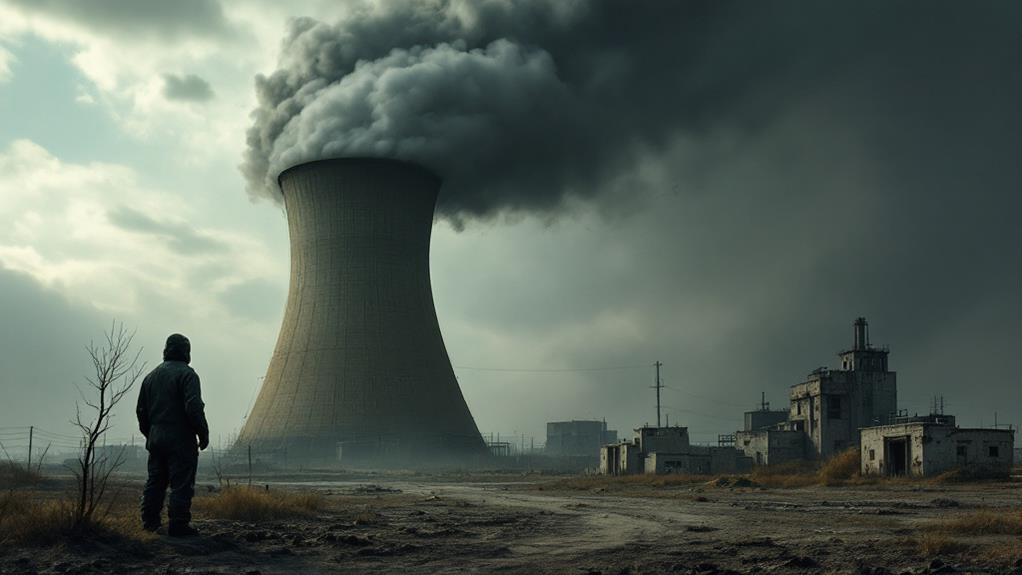
You're likely aware that the Chernobyl disaster in 1986 was the event that cemented global skepticism about the nuclear power industry. This catastrophic incident at the Chernobyl Nuclear Power Plant in Ukraine exposed severe deficiencies in reactor safety protocols. It released a massive amount of radioactive material across Europe, leading to long-term health issues and significant environmental damage. The event triggered worldwide media frenzy, highlighting nuclear energy's risks and stirring public distrust. It ignited discussions on safer energy alternatives and resulted in stricter regulations. There's more to uncover about how this event reshaped nuclear energy perception and policy.
The Chernobyl Disaster
Amidst the history of nuclear power, the Chernobyl disaster stands as a stark reminder of its potential dangers. You might wonder how this catastrophic event unfolded and why it shook the very foundation of nuclear safety worldwide. On April 26, 1986, a reactor at the Chernobyl Nuclear Power Plant in Ukraine exploded during a safety test gone awry. This led to the release of a significant amount of radioactive material into the atmosphere, affecting not just the immediate area but countries across Europe. The disaster highlighted glaring deficiencies in nuclear safety protocols and the dire consequences of failing to adhere to stringent safety measures. Decades later, the Fukushima disaster in Japan, also classified at level 7 on the International Nuclear Event Scale, reinforced these concerns, although its impact was estimated at one-tenth of Chernobyl's severity. In the aftermath, the world became acutely aware of the potential risks associated with nuclear energy. You, like many others, may have started questioning if the benefits of nuclear power outweigh these immense risks. This skepticism encouraged a global search for energy alternatives that could provide the same benefits without such catastrophic potential. As you ponder the implications of Chernobyl, consider how it forever changed the conversation around energy production, pushing nations to investigate safer, more sustainable options in pursuit of a more secure energy future.
Unveiling Reactor Flaws
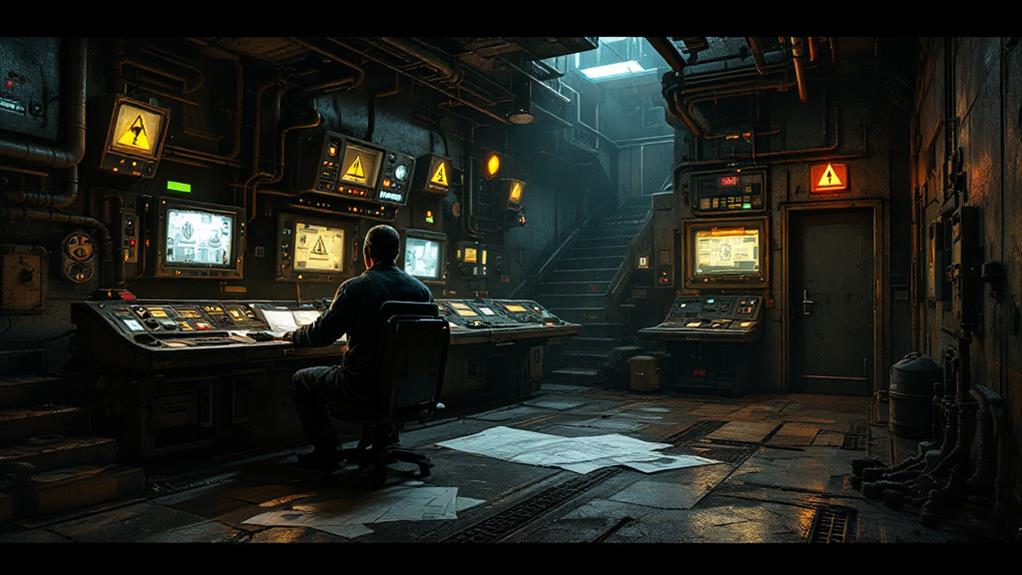
The impact of the Chernobyl disaster was profound, leading to increased scrutiny of nuclear reactor designs and their inherent flaws. This catastrophic event not only highlighted the vulnerabilities in nuclear systems but also paralleled issues in other advanced technologies, such as ethical concerns surrounding AI deployment. As you explore this subject, you'll uncover how this catastrophic event prompted a worldwide reassessment of safety protocols. Engineers and scientists questioned the reliability and safety of existing systems, pushing for advancements that could prevent future disasters.
In examining reactor design, you should focus on several critical areas that were identified as needing improvement:
- Redundancy Measures: Ensuring multiple backup systems are in place to maintain control during emergencies.
- Fail-Safe Mechanisms: Designing reactors that automatically shut down safely in case of a malfunction.
- Material Integrity: Using materials resistant to extreme conditions to prevent structural failures.
- Human Error Mitigation: Implementing protocols that minimize the risk of operational mistakes.
These improvements in reactor design and safety protocols were necessary to restore public confidence and provide safer nuclear energy solutions. The Chernobyl disaster served as a stark reminder of what could go wrong when reactor flaws are overlooked. By addressing these vulnerabilities, the nuclear industry aimed to make significant strides in preventing similar incidents. Understanding these changes helps you appreciate the complexities and importance of nuclear safety advancements.
Health and Environmental Impact
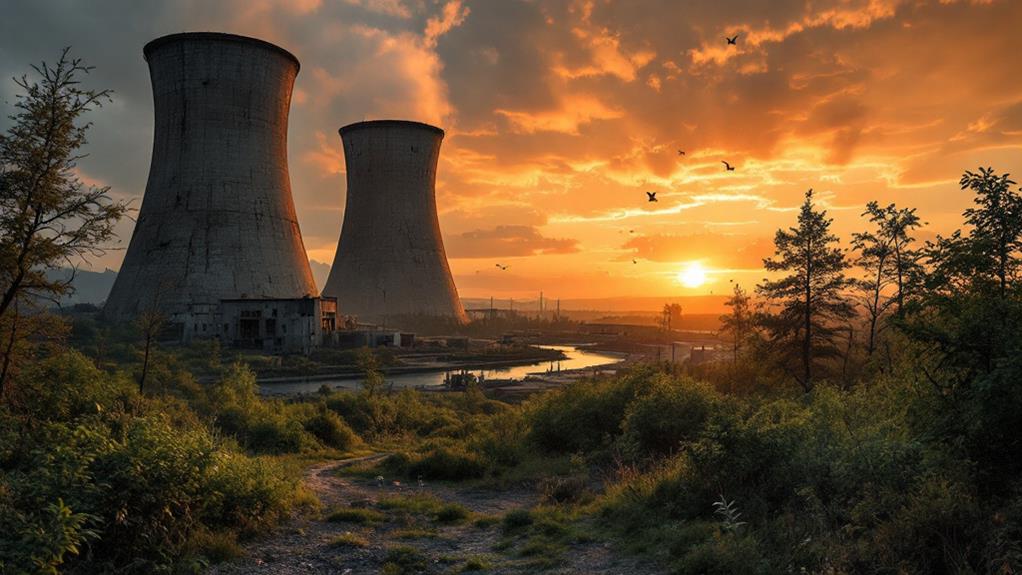
Nuclear disasters cast a long shadow on both human health and the environment. When you think about the aftermath of such events, radiation exposure is one of the initial concerns that comes to mind. It's not just an immediate threat; the effects can linger for years, causing severe health issues like cancer, genetic mutations, and other illnesses. You might not realize it, but radiation exposure doesn't just impact those directly affected. It can spread through the food chain, affecting crops, animals, and ultimately, you.
The ecological consequences of nuclear disasters are also profound. You'll find that radiation can contaminate soil and water, leading to long-term damage to ecosystems. Forests, rivers, and wildlife can suffer devastating impacts, with some species even facing extinction. This contamination can disrupt entire ecosystems, as plants and animals struggle to survive in a poisoned environment. You might notice a decline in biodiversity, which can have far-reaching effects on the stability and health of natural habitats.
Ultimately, the health and environmental impacts of nuclear disasters serve as a stark reminder of the risks associated with nuclear power. They underscore the need for caution and rigorous safety measures in this industry.
Global Media Coverage

In regard to global media coverage, you often find that nuclear power's portrayal is fraught with sensationalism and fear. Media narratives tend to focus on catastrophic events, sometimes overshadowing the facts. When an incident occurs, international reactions can amplify this effect, painting nuclear power as inherently dangerous. You might notice how certain patterns emerge in the coverage:
- Dramatic Headlines: Media outlets often use alarming headlines to capture attention, which can lead to widespread panic and misunderstanding.
- Selective Reporting: There's a tendency to highlight accidents while ignoring successful and safe nuclear operations worldwide.
- Expert Opinions: Often, the experts featured in media reports have strong biases, shaping public perception in one direction.
- Cultural Context: The portrayal of nuclear power can differ greatly between regions, influenced by historical experiences and societal values.
These patterns contribute to a global skepticism of nuclear power, even when facts might suggest otherwise. People tend to remember the dramatic stories, and these narratives often linger longer than reassurances about safety improvements. As a result, the nuclear industry faces an uphill battle in convincing the public of its potential benefits amidst these powerful media-driven narratives. Understanding these dynamics is vital when evaluating your own stance on nuclear energy.
Regulatory Oversight Failures
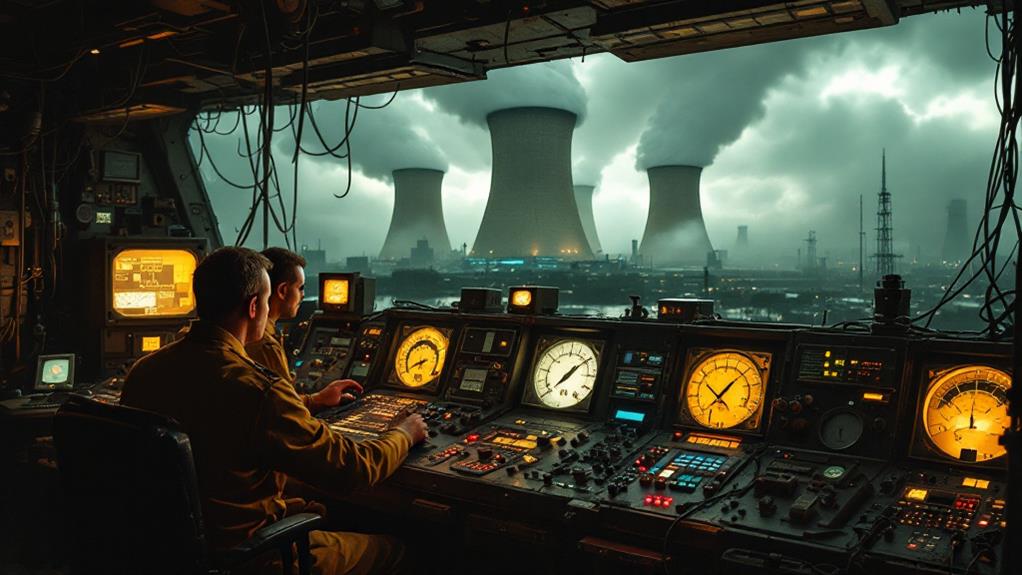
Regulatory oversight often falters regarding ensuring the safety and efficiency of nuclear power operations. When you examine the history of nuclear incidents, you'll see how regulatory gaps and oversight challenges have frequently played a role. These gaps can arise from outdated regulations, insufficient resources, or inadequate enforcement mechanisms. Such shortcomings can lead to severe consequences, shaking the confidence of those who rely on nuclear energy's promised safety.
As someone interested in understanding why skepticism surrounds the nuclear power industry, you need to reflect on how these oversight challenges manifest. Sometimes, regulatory bodies might lack the necessary technical expertise or independence from political or industrial influences. This can result in delayed responses to emerging risks or a lack of thorough safety assessments. When regulators fail to address these issues adequately, it often leads to public outcry and mistrust.
Moreover, when oversight challenges aren't addressed timely, they can exacerbate existing problems. For example, insufficient inspections or lax enforcement of safety standards can contribute to accidents or near-misses. As a result, these failures highlight the need for robust and proactive regulatory frameworks that prioritize safety above all else, ensuring that nuclear power remains a reliable energy source.
Public Perception Shift

Over the past few decades, we've seen a notable shift in public perception regarding nuclear power. This change stems from growing societal concerns and evolving public attitudes. As more information becomes accessible, people are more aware of the potential risks and benefits of nuclear energy. You're likely to notice these concerns manifesting in multiple ways:
- Environmental impact: People worry about the long-term effects of nuclear waste and its safe disposal.
- Safety issues: High-profile accidents have heightened fears about the safety of nuclear power plants.
- Economic factors: The cost of building and maintaining nuclear facilities can influence public opinion.
- Renewable alternatives: As technology advances, there's a growing interest in renewable energy sources like solar and wind.
These factors contribute to a complex landscape where nuclear power is scrutinized more than ever. You're not alone if you find yourself questioning the industry's promises versus potential hazards. Public attitudes have shifted from initial excitement about nuclear power's promise of clean energy to a more cautious, measured stance. This shift is driven by an increased focus on safety, environmental impact, and economic viability, reflecting broader societal concerns about the future of energy production.
Policy and Safety Reforms
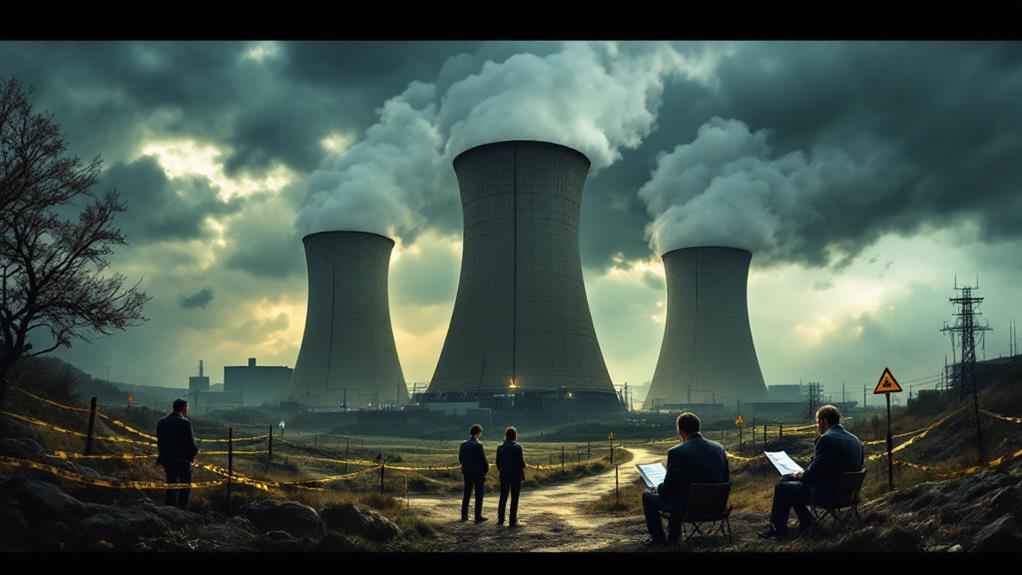
As public concerns about nuclear power's risks grow, governments and industry leaders are actively pursuing policy and safety reforms to address these issues. You've probably noticed how safety regulations are being tightened across the board. After high-profile incidents, the nuclear power industry realized it had to bolster public confidence. This means implementing stricter safety standards to guarantee that facilities can prevent and respond to potential emergencies effectively.
Regulatory bodies are focusing on policy changes aimed at enhancing transparency and accountability within the industry. These changes often involve regular safety audits, more rigorous inspections, and mandatory safety drills. You might also see an increase in the sharing of safety data with the public to foster trust.
In parallel, governments are stepping up by revising existing policies. They're emphasizing the importance of risk assessment and management, assuring that nuclear facilities are prepared for even the most unlikely scenarios. Many nations are also investing in research to develop advanced technologies that can further improve safety measures.
Long-Term Industry Implications
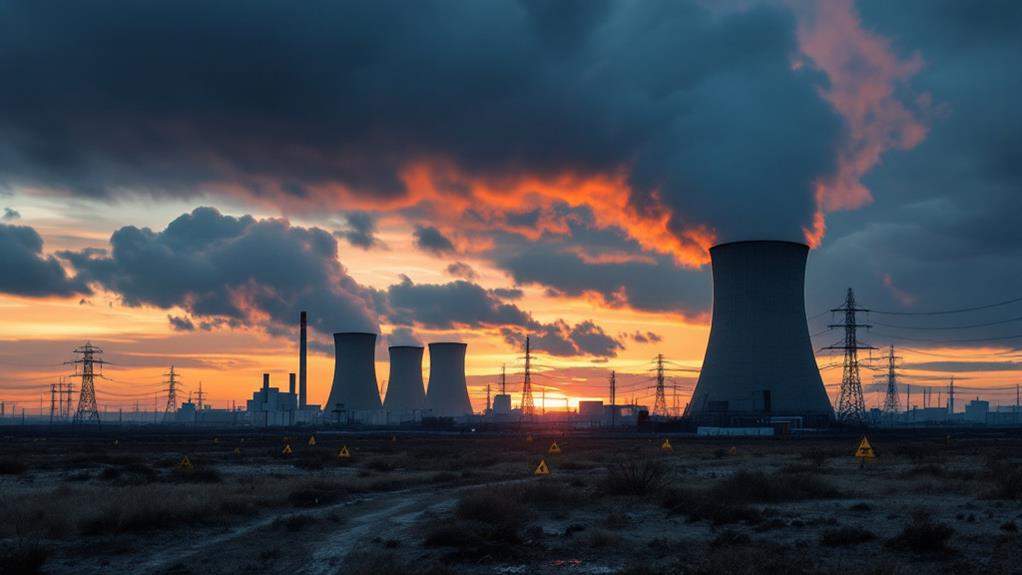
One may wonder what the long-term implications for the nuclear power industry look like reflecting recent policy and safety reforms. With changes sweeping through the industry, there's a lot to evaluate regarding nuclear economics and emerging energy alternatives. You might find yourself questioning if nuclear power can remain competitive and safe enough to meet future energy demands. Here are some key implications:
- Increased Costs: Stricter safety regulations could drive up operational costs, impacting nuclear economics and potentially making nuclear less attractive compared to cheaper energy alternatives.
- Technological Innovation: The industry might shift focus to developing advanced reactor designs that promise improved safety and efficiency. These innovations could redefine how nuclear power fits into the energy mix.
- Public Perception: Despite reforms, public skepticism remains. The industry will need to invest in rebuilding trust to maintain its role in global energy discussions.
- Energy Policy Shifts: As governments prioritize renewable energy sources, nuclear power's share might diminish unless it can prove itself as a reliable and sustainable option.
In this rapidly evolving landscape, nuclear power must adapt to maintain relevance. It'll be essential for you to stay informed about how these changes unfold and impact the broader energy sector.



